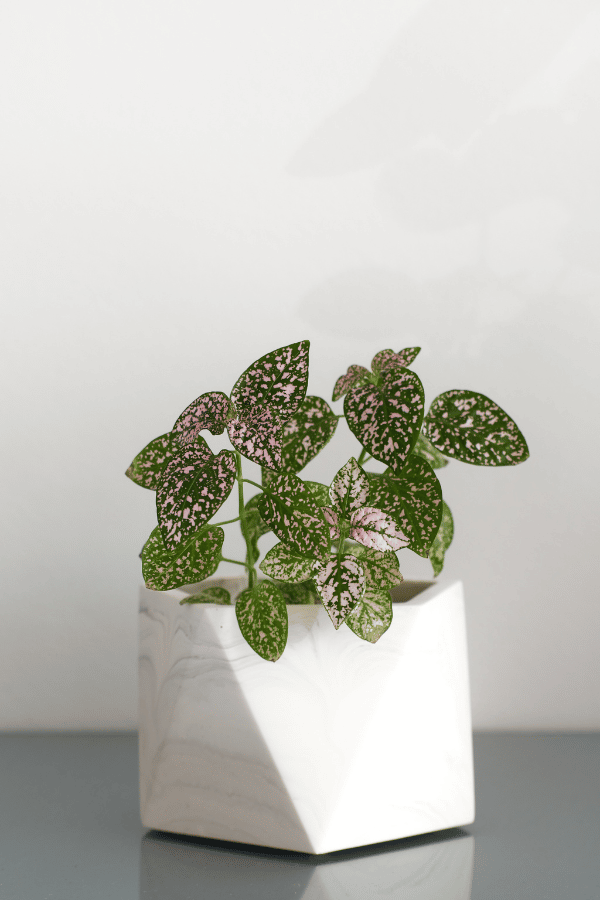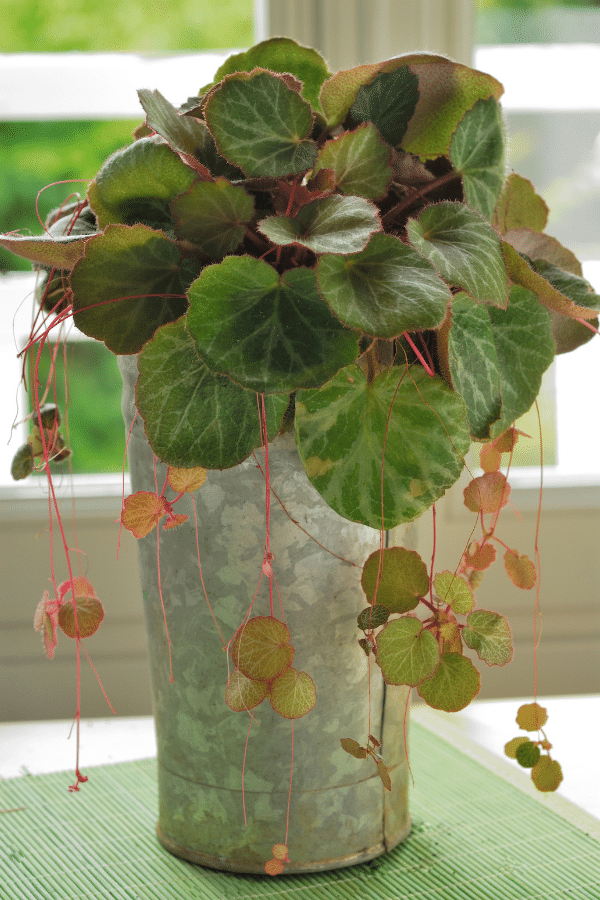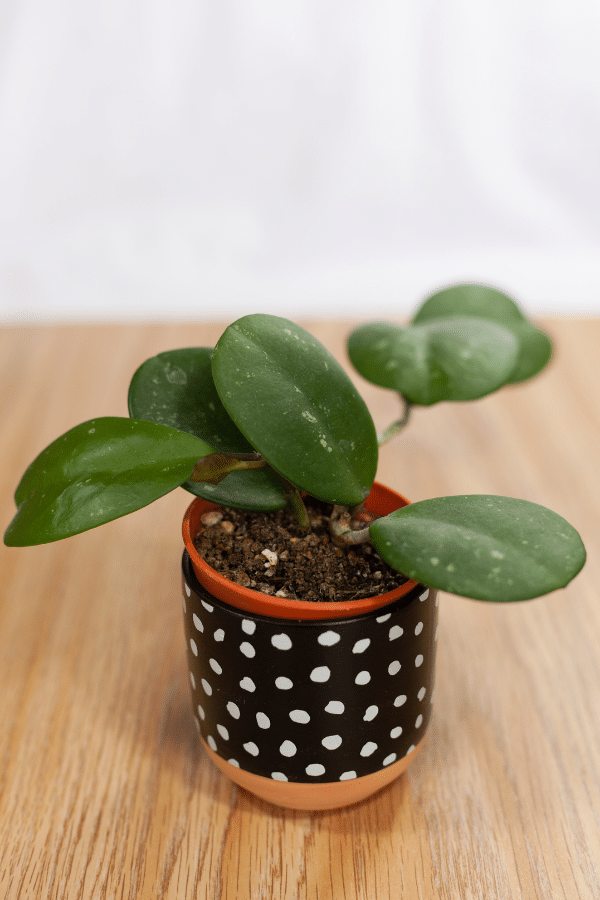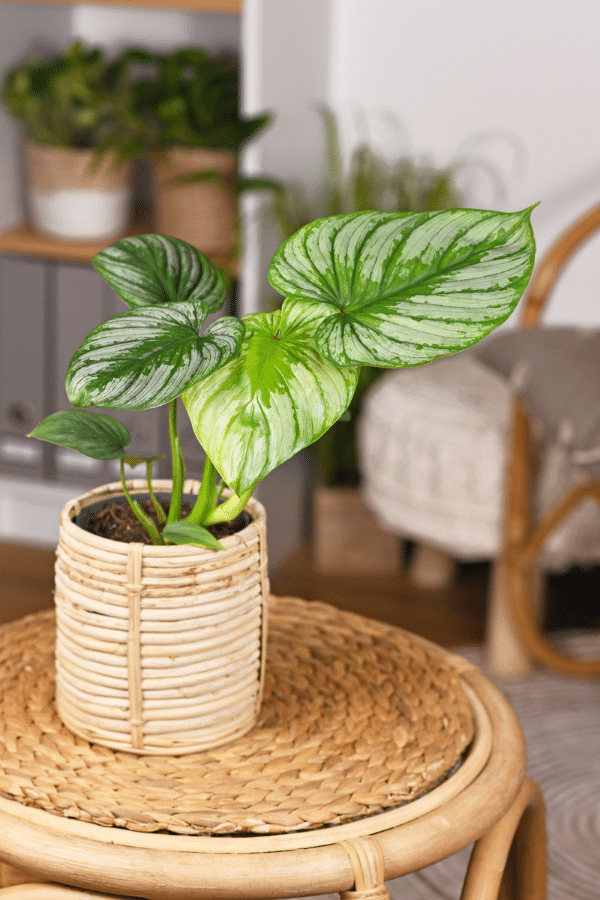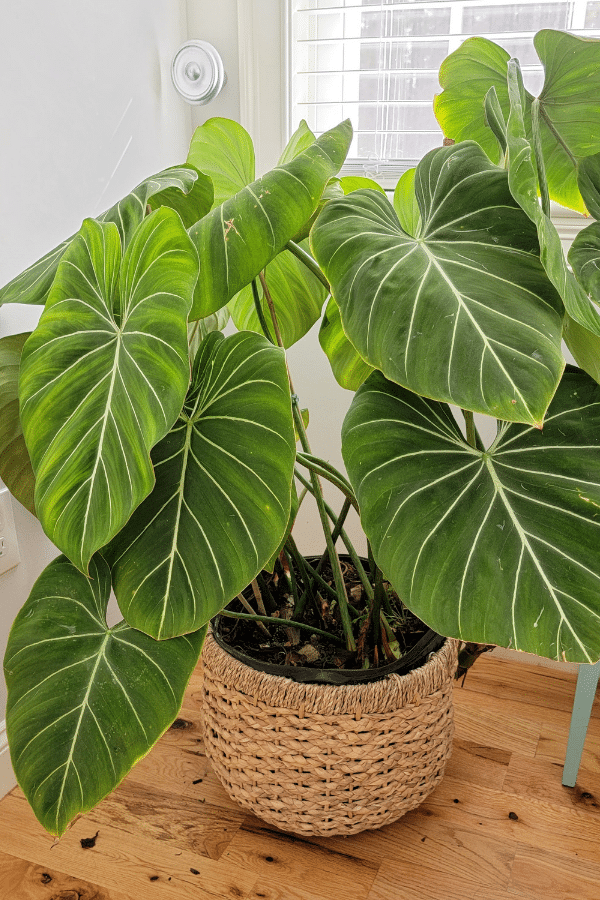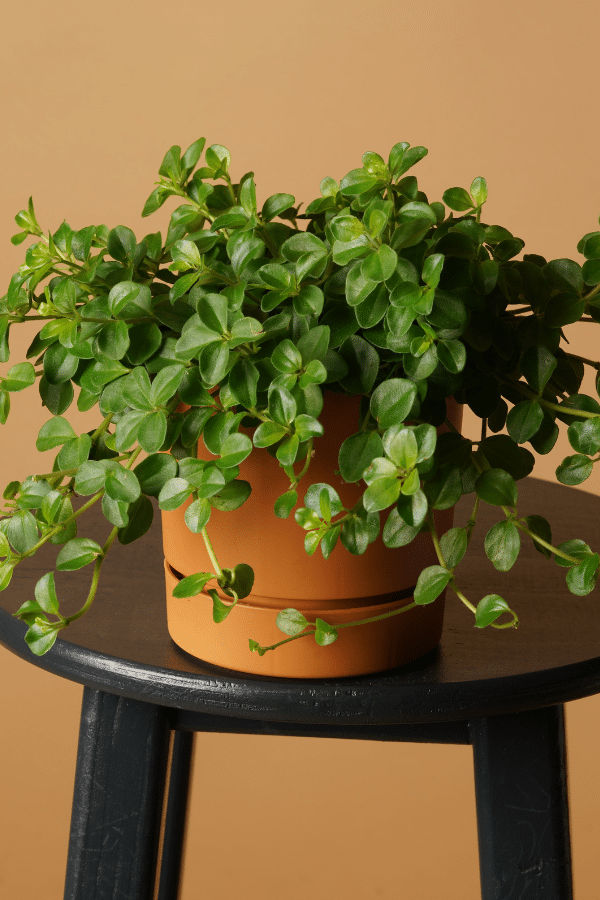Dracaena Fragrans (Corn Plant)
Scientific Name: Dracaena Fragrans
Dracaena Fragrans care is an easy plant to grow and care for. If you are looking for a slower-growing plant with a tree-like appearance, a Corn Plant may be for you.
To give this Dracaena plant the best care, it requires well-draining soil, water the plant when the top two inches of the soil is dry, provide it with bright indirect sunlight, temperatures ranging from 60-75F, and average to high humidity levels.
Quick Care Overview
| Common Name | Corn Plant |
| Scientific Name | Dracaena Fragrans |
| Family | Asparagaceae |
| Origin | Africa |
| Growth Rate | Slow |
| Identification | Tree-like plant with arching sword-shaped leaves |
| Height | Up to 6 feet tall |
| Soil | Well-draining soil |
| Water | Water when the top two inches of soil is dry |
| Temperature | 60-75F |
| Sunlight | Bright indirect sunlight |
| Toxic to Cats & Dogs | Yes |
| Toxic to Humans | Yes |
| Pests | Scale, thrips, spider mites |
| Diseases | Root rot, leaf spot |
Below we will dive deep into this Dracaena Fragrans care guide.
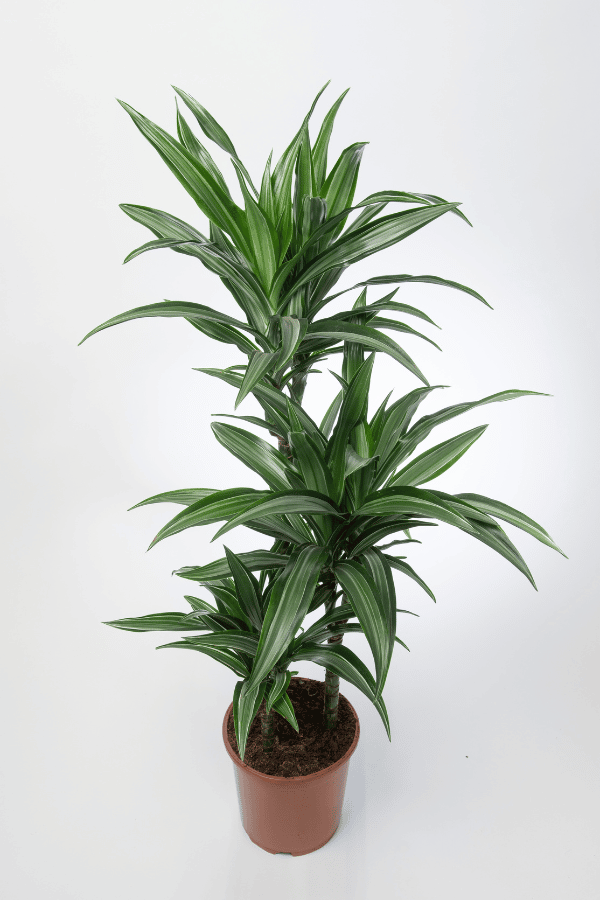
Dracaena Fragrans History
African native Dracaena Fragrans, known as the corn plant, is a famous evergreen tree that has been grown indoors since the mid-1800s. This slow-growing plant grows upward with thick canes that produce long, narrow foliage. As this plant has an appearance similar to a palm tree, they are sometimes called “false palms.” Additionally, this plant is well known for its air-purifying properties.
Dracaena Fragrans Identification
Dracaena Fragrans is a tree-like plant with large, arching sword-shaped leaves. Dark-green foliage may grow up to 2 feet long and has a creamy-yellow stripe found down the center of the leaf. Corn plants rarely flower when indoors.
Dracaena Fragrans Growth Facts
This large plant takes center stage when grown indoors and is ideal for hotels, offices, and large rooms.
How Big Does a Dracaena Fragrans Get?
The Corn Plant can reach up to 50 feet tall in its natural environment. However, it may reach up to 6 feet tall when grown indoors.
Dracaena Fragrans Care
Corn Plants like to be kept in sunny locations and kept in high humidity. Protect this plant from cold and drafts. Overwatering is the number one cause of issues with corn plants. Ensure that you do not overwater or allow this plant to sit in standing water within the plant container’s drainage tray.
Dracaena Fragrans Soil
Your Corn Plant will perform best if placed in a loose, airy growing medium, such as a quality commercial potting mix with incorporations of perlite.
Dracaena Fragrans Fertilizer
Corn Plants are considered moderate feeders. They will enjoy being fed every other month throughout the spring and summer with a balanced, liquid fertilizer indicated for houseplants. Do not overfeed, ensure that you follow all label instructions, and do not feed in the late fall or winter.
Dracaena Fragrans Watering
Your Corn Plant will prefer to be grown in moist soil that is not oversaturated with water. Rewater your plant after the top 2-3 inches of soil has dried. Watering frequency may be reduced in late fall through winter. Dracaena Fragrans is known to be sensitive to chemicals in tap water. Ideally, water your corn plant with either rainwater, distilled, or filtered water.
Dracaena Fragrans Light Requirements
Dracaena Fragrans will thrive and grow big and tall if placed in bright indirect light. However, too little light exposure will lead to foliage fading and growth stunting. Conversely, too intense of direct sunlight will lead to foliage scorching.
Dracaena Fragrans Temperature & Humidity
Your Corn Plant will like to remain in warm, humid conditions. Do not expose your plant to temperatures below 60 degrees, as this may cause stress and damage to the plant. Additionally, the corn plant prefers to be grown in a humid environment above 50 percent. Utilize a humidifier or pebble tray to raise your home’s humidity level.
Repotting Dracaena Fragrans
You should repot Dracaena Fragrans every 1-3 years. Select a container size that is 2” larger than the previous one. Repot your plant, refresh the soil, tamp lightly, water thoroughly, and place in indirect light.
Dracaena Fragrans Maintenance & Pruning
After maturing, the Corn Plant will show yellowing lower leaves. These leaves may be removed. Additionally, you may cut back your plant if it becomes too lengthy by cutting off the tops of the canes. The lopped-off top of your Corn Plant may be used to propagate.
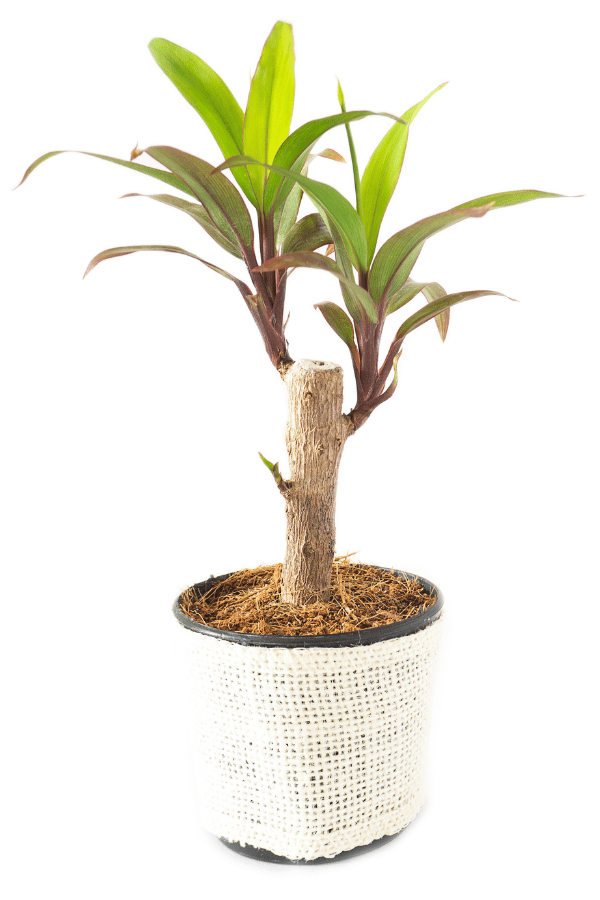
Dracaena Fragrans Propagation
Corn Plants can be easily propagated by top cutting or stem cutting. Ideally, propagation should be done in spring. To propagate using a top cutting, snip off the top of the plant below the leaf line, ensuring that you include one node. To propagate using a stem cutting, take an 8 inch piece of stem, submerge the cut end into water, and place it in indirect light. Within a few weeks, roots should develop. Do not let the water evaporate or become murky. Once roots have become at least an inch long, pot the cutting into soil.
Dracaena Fragrans Toxicity
Toxicity to Humans
Dracaena Fragrans is considered toxic and should not be consumed.
Toxicity to Cats & Dogs
Unfortunately, the Corn Plant is considered toxic to cats and dogs. Do not allow your pet to ingest this plant. However, if you suspect your pet has consumed any portion of this plant, contact your veterinarian or animal poison control.
Dracaena Fragrans Problems
Dracaena Fragrans Leaves Turning Yellow
Yellowing foliage of a corn plant is often due to overwatering. Additionally, yellowing foliage may be due to sudden fluctuations of temperature, or nutrient deficiency.
Dracaena Fragrans Leaves Turning Brown
Although this plant is considered drought-tolerant, its foliage may turn brown due to lack of moisture. Alternatively, browning may be due to too cool or too warm of temperatures. Additionally, this plant is sensitive to chemicals in tap water and may experience foliage browning due to excess chemical buildup.
Dracaena Fragrans Diseases
Several fungal diseases may affect your Dracaena, including leaf spot and root rot. Ensure that you do not overwater your corn plant, as this is the leading cause of disease.
Dracaena Fragrans Pests
The Corn Plant may become susceptible to attack from thrips, scale, and spider mites. Periodically inspect your plant. Upon identifying an infestation, isolate your plant, and treat it with a pesticide such as insecticidal soap or neem oil.

